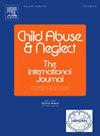Does the timing matter? The association between childhood adversity and internalizing and externalizing problems from childhood to adolescence and its sex differences
IF 3.4
2区 心理学
Q1 FAMILY STUDIES
引用次数: 0
Abstract
Background
Childhood adversity (CA) is a well-known risk factor for mental distress, and its impacts may vary depending on its timing. However, relevant empirical studies are rare and ambiguous. Similarly, prior studies have given little attention to possible moderating effects by sex, particularly in the context of developmental stages.
Objective
This study sought to identify when the impacts of CA on children's mental health become pronounced and the extent to which these relations and sensitive timing vary by gender.
Participants and setting
Data were from the Young Women and Child Development Study (n = 360), covering ages 4.3 to 17.6.
Methods
Time-varying effect models, including moderation by child gender, were evaluated.
Results
The effect of CA on mental health surged during middle childhood (b = 0.93 at age 10 and 1.94 at age 9 for internalizing and externalizing problems, respectively) and peaked at age 15 (b = 2.35 and 3.53 for internalizing and externalizing problems, respectively). Gender interaction findings suggest that gender moderation effects were limited to between ages 10.3 (b = 0.88) and 14.3 (b = 1.11) for internalizing problems and between ages 5.3 (b = 1.06) and 7.0 (b = 1.31) for externalizing problems. For girls, the influence began escalating at an earlier age.
Conclusions
Middle childhood and early adolescence should be considered key intervention points to prevent CA from worsening children's mental health. Intervention timing should be tailored by gender to effectively disrupt the impacts of childhood adversity on mental health.
求助全文
约1分钟内获得全文
求助全文
来源期刊

Child Abuse & Neglect
Multiple-
CiteScore
7.40
自引率
10.40%
发文量
397
期刊介绍:
Official Publication of the International Society for Prevention of Child Abuse and Neglect. Child Abuse & Neglect The International Journal, provides an international, multidisciplinary forum on all aspects of child abuse and neglect, with special emphasis on prevention and treatment; the scope extends further to all those aspects of life which either favor or hinder child development. While contributions will primarily be from the fields of psychology, psychiatry, social work, medicine, nursing, law enforcement, legislature, education, and anthropology, the Journal encourages the concerned lay individual and child-oriented advocate organizations to contribute.
 求助内容:
求助内容: 应助结果提醒方式:
应助结果提醒方式:


